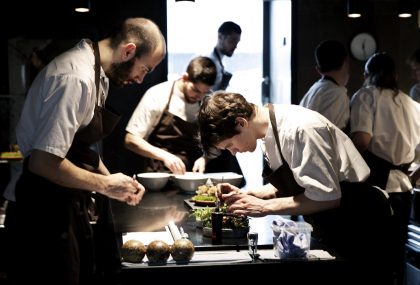The top five cities for delicious desserts
Liana Lozada
Lifestyle and travel writerIf stories are judged by how they end, then why not hold meals to the same standard? Once the enticing appetiser and entrée pass, we look on to the concluding dessert – the element that ties it all together. Geography, and sometimes a little serendipity, have lent themselves to these flavourful finales. But for these five cities, heritage and local culture give their desserts a unique, amazing taste, making them a cut above the rest. Whether you take your dessert as a last course or prefer to feature it as the main event, dive in and enjoy every last delicious, international bite.
COPENHAGEN: Rødgrød med fløde and risalamande
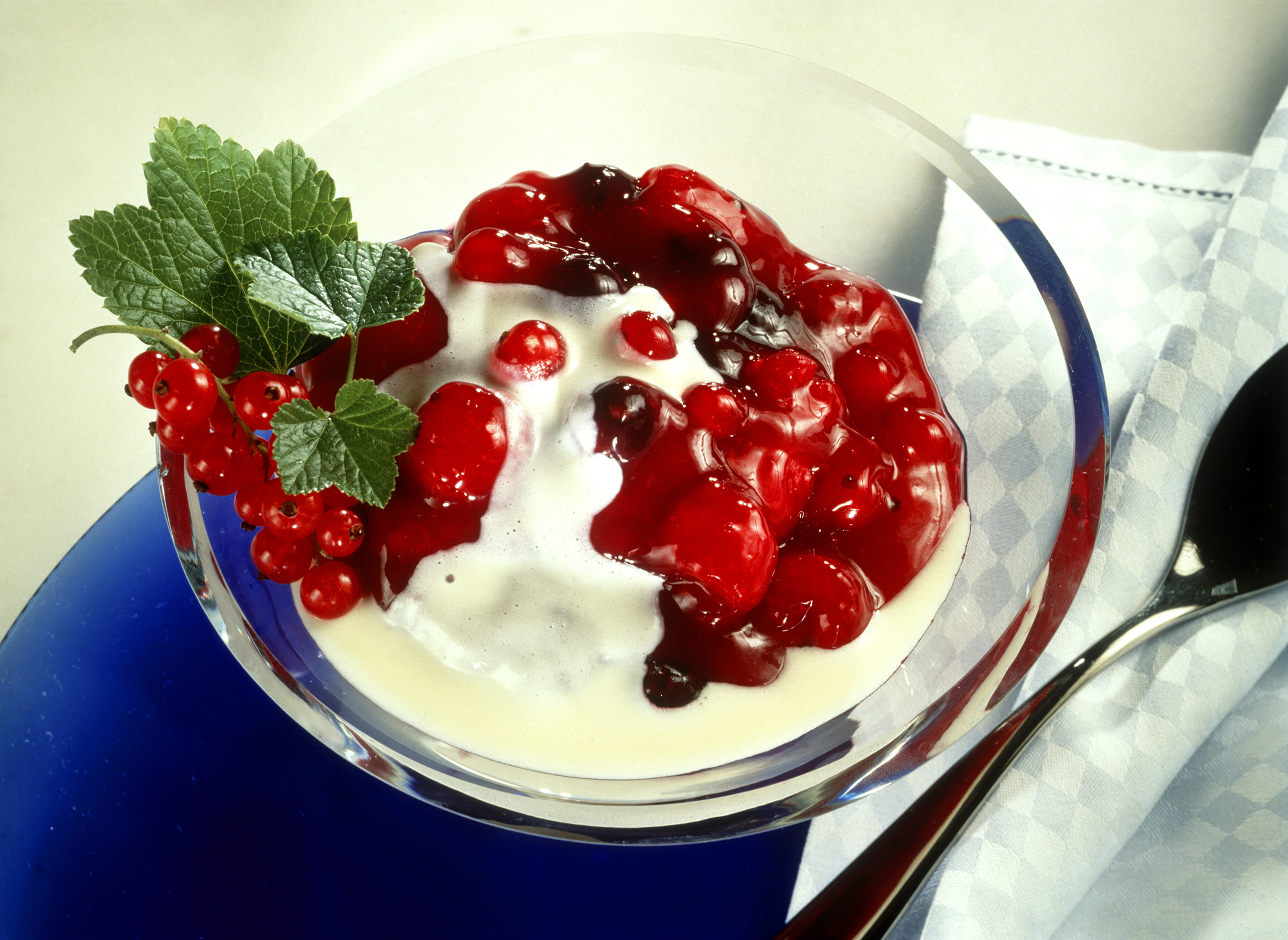
Desserts in Denmark sway with the seasons. Spring and summer belong to rødgrød med fløde, a tangy berry-based dish that has ventured from home kitchens to chef’s tables (pictured above). Depending on who you ask, rødgrød med fløde texturally resembles a pudding, stew or porridge. The dessert is made with boiled currants, raspberries, blackberries or strawberries, and some recipes include rhubarb. Once the fruit has been boiled and a desirable consistency is reached, sweetener or vanilla is added, then the juice is thickened and chilled. Rødgrød med fløde is served cold with a wallop of heavy cream or touch of milk. The perfect cool dessert for a warm day.
Risalamande has its tasting turn in the winter months, especially during the holidays. Best classified as a rice pudding, risalamande is composed of vanilla, whipped cream and almonds smothered in a hot cherry sauce. In Danish households, the risalamande maker drops a whole almond inside one of the servings and the person who finds the almond gets a small gift as a reward.
In Copenhagen, you can find these toothsome treats just about everywhere, from fine dining to small, independent bakeries. Many Danes have fond family memories of both dishes, so it’s no wonder they’re so prevalent across the city. At the Michelin-starred Marchal, the rødgrød med fløde is made with strawberries inside a white chocolate shell. If you’re there in winter, go for their traditional version of risalamande, available from November to December as well. At Aamanns, a nod to risalamande is also on the menu around the same time of year. Enjoy the decadent flavours of this rice mousse made with cherry sorbet and toasted almonds. Like Marchal, Aamanns highlights rødgrød med fløde when the weather warms and the berries flourish, so get those bookings in for your spring/summer rødgrød med fløde if they’re your preferred seasons.
MIAMI: Flan
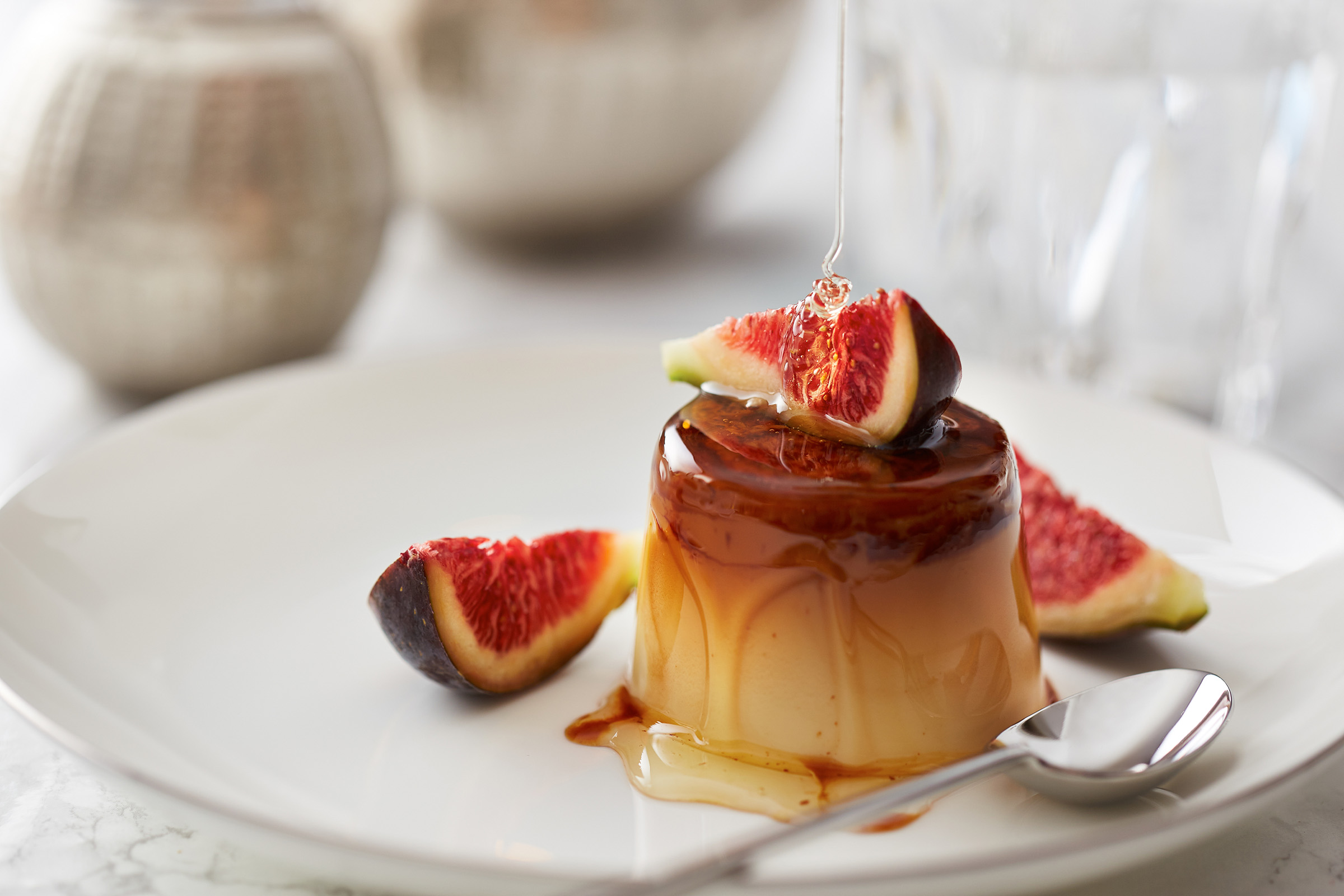
Flan variations span the globe with its roots traced back to the ancient Romans. Flan arrived in Latin America via Spanish conquistadors, slowly evolving into a revered post-dinner staple.
Flan’s derivation is dairy – loads of it – as it is conventionally made with milk, condensed milk, or evaporated milk (or all three!), eggs, vanilla and sugar. The blend is whisked together, settled into a caramelised pan, and baked in a water bath. Once finished, the custard is chilled overnight. To enjoy, the container is carefully flipped onto a serving plate, allowing the caramel layer to sit on top while the remaining caramel juices trickle down to the plate’s bottom and pool. The result is a creamy, rich dessert course. Flan’s caramel puddle may be quite sweet for some people, so restaurant servers commonly suggest eating it with an espresso; the bitter sip helps cut through the dessert’s notable sweetness.
Miami’s concentration of Latin American and Caribbean ethnicities make it the ideal city to try several flan selections, and thankfully, flan stays in rotation at almost every Latin American bakery or eatery in the city. The subtropical climate lends itself to fruit flans too, with coconut and guava leading the pact. Keep an eye out for flan de queso, (cheese flan), chocolate flan, and dulce de leche (sweetened milk) flan, too – if you’re looking to try them all.
For an elevated flan experience, consider Bulla Gastrobar in Coral Gables or Toro Toro in Downtown. Bulla’s nightly menu boasts a coconut flan, but the restaurant has been known to switch things up on the menus in accordance with the seasons. Come fall, a flan de calabaza (pumpkin flan) earns a spot within Bulla’s limited-time items. At Toro Toro, a Latin-fusion haunt backed by acclaimed chef Richard Sandoval, savoury dinners can be topped off with a coconut milk and cream cheese flan with a minced fruit medley on top.
PARIS: Pastry
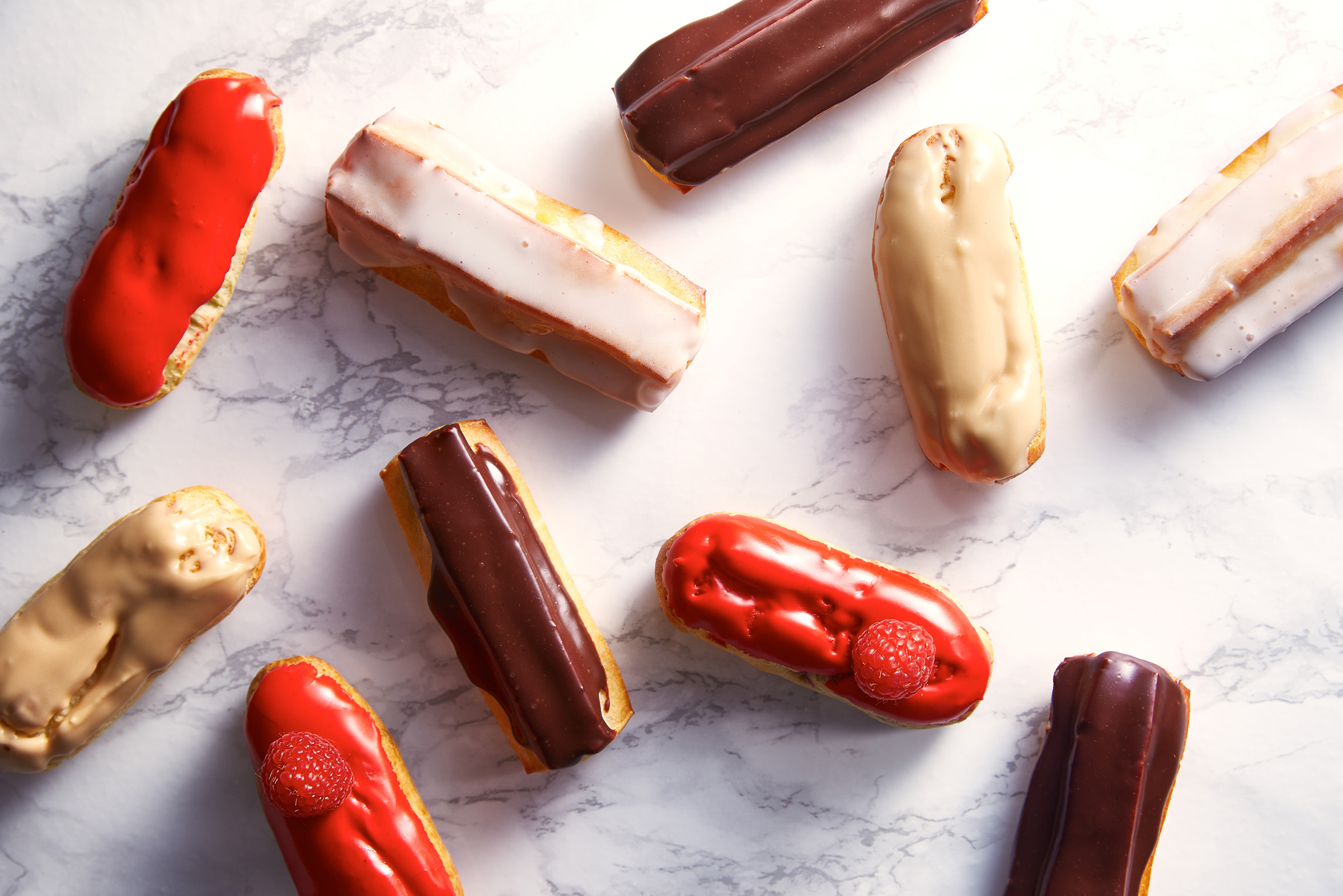
With such celebrated culinary traditions, Paris is the postcard for epicurean indulgence. Desserts are so delicious here, it’s impossible to choose just one. If you’re stopping in Paris, though, be sure to get your hands on a Parisian pastry. Generally speaking, a pastry is a baked delicacy in which dough, fat and water are essential ingredients. Sweetened pastries, often called “baker’s confections”, are made under the watch of a pâtissier, or a pastry chef. Pastry-making requires an extraordinary level of skill and finesse, as well as an in-depth understanding of cooking chemistry. Despite these high expectations, Paris’ pastry location options are plentiful. But for time’s sake – and caloric consciousness – these are the main goodies you’ll want to taste before you leave the City of Love.
The éclair (pictured above) is a classic French choux pastry, an airy pastry that achieves its consistency from boiling the fat and water together before adding flour. Once taken out of the oven, this elongated and hollow pastry is cooled, filled with cream or custard and topped with icing. For a lusciously crafted éclair, drop by Angelina Paris and bite into one oozing with bitter dark chocolate. For those seeking sophisticated subtleties, the financier may be the way to go. This small, golden almond cake isn’t much to look at, but don’t let that fool you. Financiers are decadent without being overly saccharine. They’re a favourite find at Gontran Cherrier’s artisanal bakeries around the world, so you’re sure to find them along your travels.
Still, a trip to Paris feels incomplete without a pitstop at Pierre Hermé. This fourth-generation master has been called the “king” and “Picasso” of modern pastry. So what should you try when visiting a place so praised? Everything, of course! Start with a tarte. Tartes are shortcrust pastries with crumbly crusts, brimmed with fruit or custard fillings, and Pierre Hermé has them in abundance. Sour and sweet blend beautifully with the lemon tarte sprinkled with lemon zest. The coffee or Tahitian vanilla tarte don’t disappoint either. Bon appétit!
TOKYO: Mochi
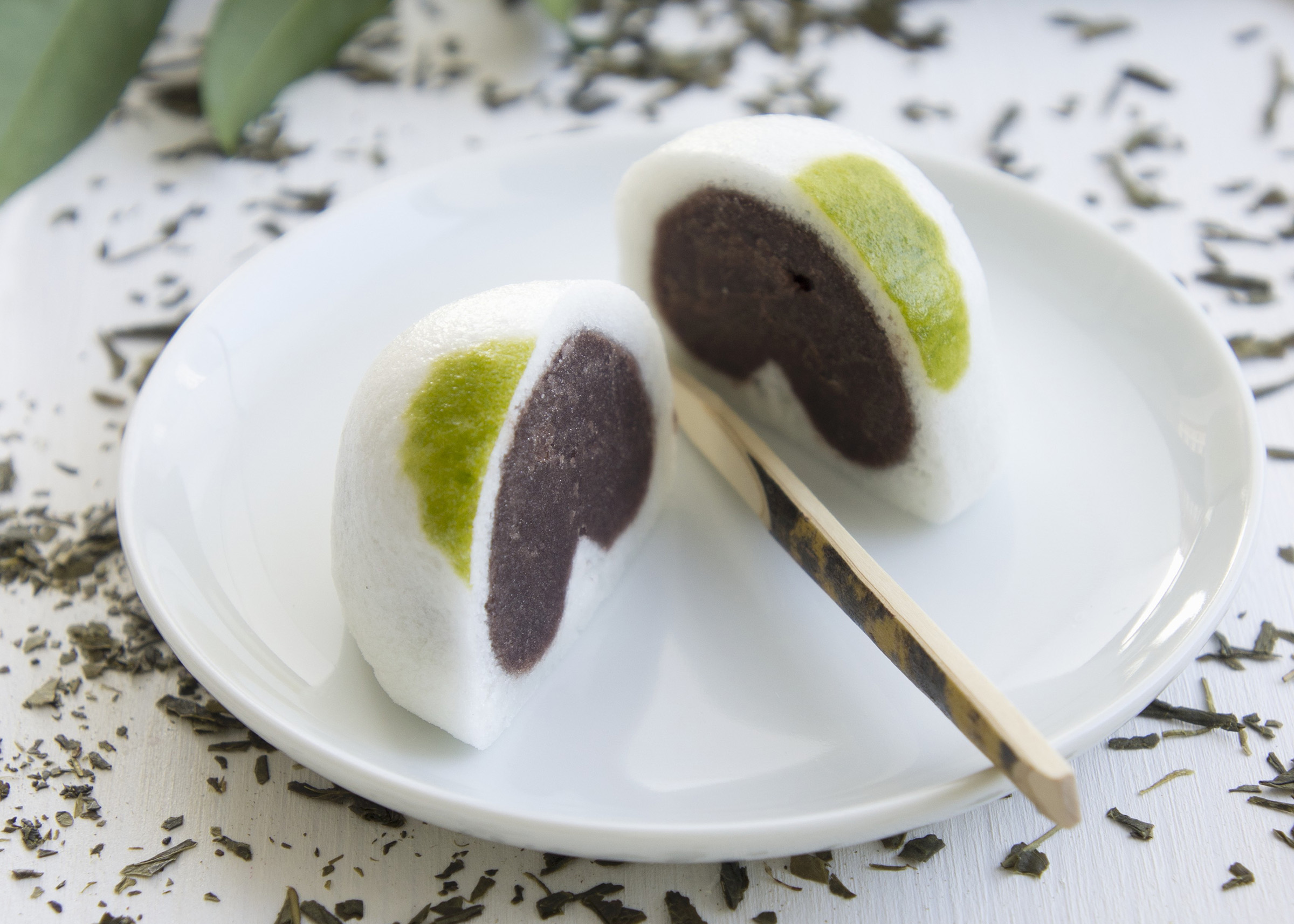
The tastes of Tokyo captivate the globe: Their sushi mastery and 200-plus Michelin starred restaurants lure high-end diners and devoted street foodies alike. But Tokyo’s temptations go beyond the savoury; their sweets are equally palate pleasing. One of Tokyo’s biggest flavour exports is mochi, best described as a small, sticky rice ball. But not all mochi is identical! The foundational mochi method begins with a glutinous rice pounded into a paste and then moulded. The resulting shape can be toasted, stuffed or topped with sugar. Mochi is customary wagashi, or confections presented in a traditional Japanese tea ceremony. With its rice foundation, variations exist by way of ‘stuffing’. Daifuku, a mochi stuffed with anko (a sweet red bean paste), is also a typical wagashi inclusion (pictured above). And in the springtime, Ichigo Daifuku arrives, or mochi stuffed with anko and a whole strawberry.
For a taste of homemade mochi, head to Gekko in Arakawa, brimming with fresh platings. This small cafe is conveniently close to Tokyo’s Minowa Station, so you can grab your mochi to go if necessary. Over at Tokyo’s Imperial Hotel, several types of mochi are available inside Toraya, a tearoom boasting Japanese snacks, light bites and confections. Toraya playfully forms some of their mochi as a small white bird, so it’s delicious and cute all at once. It’s only seasonally available, though, so be sure to snag one while it’s on offer!
Looking for a cool treat to beat the heat? Try mochi ice cream, made using a different flour from traditional mochi, or mochiko, which allows the dessert to maintain a chewy texture without hardening. Japanese mochi ice cream has garnered a devoted international following: Mochi ice cream shops dot streets from Thailand to California, and Japanese chefs and restaurateurs Katsuya Uechi and Nobuyuki “Nobu” Matsuhisa fuelled worldwide fascinations by highlighting mochi ice cream from Monte Carlo to Dubai. A signature take-home treat, you likely won’t find it in Japanese restaurants. Instead, you’ll find it in convenience stores or small sweet shops. If trying mochi ice cream in Japan is on your bucket list, be sure to grab a package (or two!) from a local grocery store to nosh on at your leisure.
NEW YORK CITY: Cheesecake

New York is central to food craze after food craze. Avid foodies have stood in lines circling city blocks to sample the latest “it” food – remember cronuts? But despite New York’s penchant for foodie buzz, nothing has endured quite like the New York-style cheesecake. Cheesecake’s evolution fittingly follows the history of cheese, dating all the way back to the Romans in first century B.C.. Cheese lead to the creation of cream cheese in the late 1800s in New York, a defining transition point in how we imagine cheesecakes to look and taste today.
The New York-style cheesecake is characteristically made with cream cheese, without fruit, chocolate or caramel, dense and frills-free in nature (pictured above). The cream cheese, heavy cream, sugar, egg and dash of vanilla mixture is baked on top of a biscuit base, set to cook in a roasting pan water bath. After chilling over night, this simple dessert is ready to enjoy. Ask a New Yorker where to find the best slice in all of the five boroughs, and you’ll elicit passionate responses – many of which will include Junior’s in Brooklyn. Of course, try a slice of their original New York plain cheesecake. But if you’ve got an inkling to branch out, spring for the “Best of Junior’s Sampler”, which gives you a choice of four flavours, from the original plain cheesecake, raspberry swirl, brownie marble swirl and apple crumb cheesecake.
Other New Yorkers will rally for Veniero’s, a Manhattan pastry shop and cafe with an Italian backstory. This family run joint has been in the same location since 1894, evolving into a landmark city establishment famous for its more than 200-variation cheesecake delights. Veniero’s advertises that it houses the “creamiest and yet finest cheesecake that will ever approach your lips”. With a tagline like that, how could anyone resist forking a slice?
If you’re ready to indulge your sweet tooth and take a bite of these tasty international desserts, search your dates now for your next dessert-centric holiday.




